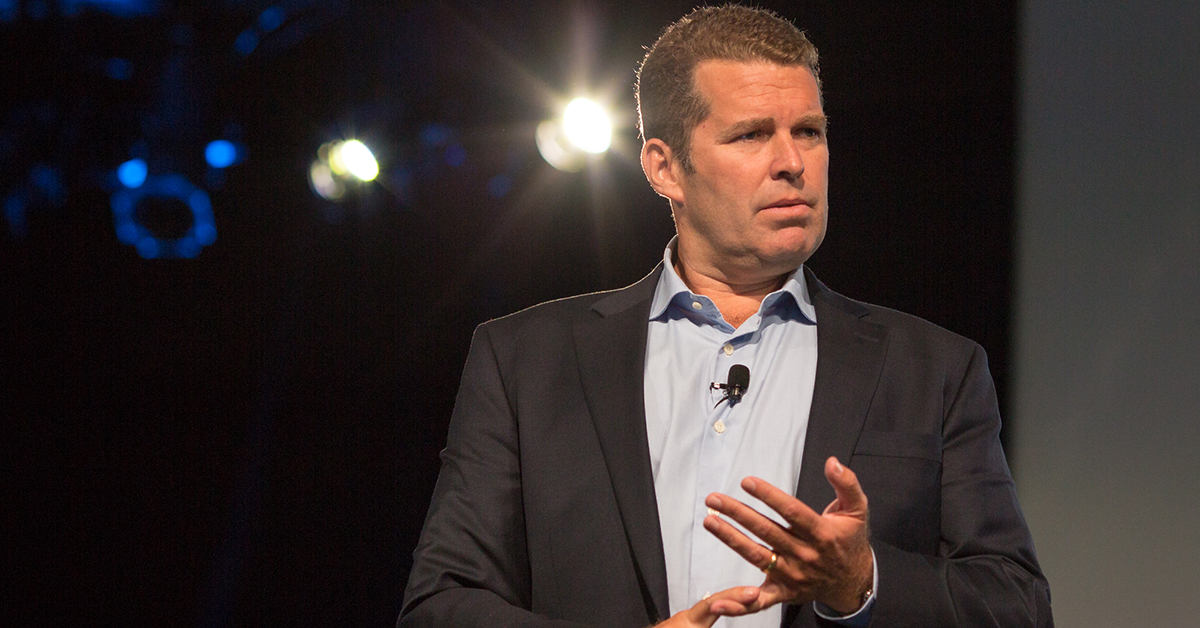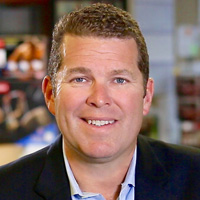This article is a follow-up to my recent blog post, “4 Keys to a Killer Keynote.” These keynotes have the power to inspire audiences and drive them toward taking action. I have been actively speaking at various events for the past decade, delivering hundreds of keynotes to audiences of all sizes.
These keynote speaker engagements have ranged from intimate board meetings with just six participants to large-scale gatherings with up to 40,000 attendees. I have engaged with a wide range of industries and organizational verticals, spanning from sales and backend systems integrators to CEOs and volunteers, encompassing nearly every facet of the planet.
While I haven't seen it all, I've witnessed enough (and acquainted myself with remarkable speakers) to understand the fundamental elements of crafting and delivering a keynote that leaves a lasting impression. I believe that the people who deliver great keynotes do it for one reason: to make a positive impact. They approach their profession with a deep sense of dedication, treating it as a significant personal commitment.
Crafting truly impactful keynotes that inspire action requires an all-in commitment from the speaker. By “All-In,” I mean a willingness to open your heart to the audience in ways that enable an emotional connection. While it may come across as overly touchy-feely to certain people, delivering an exceptional keynote is truly centered around establishing a profound connection. If you don’t connect with your audience, then you will not be able to convince them to take action.
That is the incredible power of impactful keynote speeches: they can inspire your audience to attempt things they may have never believed possible. The keynote ignites a newfound willingness to explore uncharted territories and embrace new challenges. Exceptional speakers embrace risks and have an innate sense to gauge the effectiveness of their keynote. They possess the ability to adapt swiftly when necessary.
Delivering inspiring keynotes is truly an art form, and based on my experiences and observations, there are three essential elements that all great keynotes possess.
Keynote Essential #1: Know Thy Audience (and Thy Conference)
Before taking the stage, a skilled presenter invests time in understanding their audience. They seek answers to important questions like: "Why is the audience here?" "What keeps them up at night?" "Who have they listened to in the past, and who will follow after me?" "How can I contribute to their success?" "What action can they take today?" "Which words, phrases, values, virtues, call-signs, slogans, mottos, etc., can I employ to establish a meaningful connection?" It is through this audience-centric approach that a presenter can truly engage and connect with their listeners.
At times, I am the sole keynote speaker, where the audience eagerly awaits my message. Crafting a keynote for such an audience differs from creating one for a multi-day conference, where I am entrusted with delivering an opening or closing keynote. I have the privilege of delivering numerous opening and closing keynotes, and I find great joy in being a part of these events. They provide me with the opportunity to skillfully connect different aspects of the conference, creating a seamless and engaging experience for attendees.
To advance to Keynote Essential #2, successful completion of Keynote Essential #1 is necessary. This entails diving into the event stakeholders' objectives and gaining a comprehensive understanding of the audience. To gain insights into your audience, here are three avenues you can explore:
- Pre-calls: Don't restrict your investment in pre-calls. Dedicate sufficient time to listen to the client's needs and gather the information you need. I understand that it may seem simple and obvious, but it is worth emphasizing: conduct as many pre-calls as necessary to gather the information you need.
- Company Website and Internet Articles: Expand your intelligence gathering beyond just the pre-call. Conduct thorough website sleuthing beforehand to uncover additional insights about your audience. This will enable you to ask more detailed and targeted questions during the pre-call.
- In-person Visits: Take the last step of meeting with audience members and stakeholders on the evening before or even on the day of the keynote. This allows for almost immediate customization of the keynote and can add an exhilarating touch to your performance.
Despite its critical importance, only a handful of keynote speakers go the extra mile, as it requires promptly tailoring the keynote to specific needs. I always tell my clients that “I reserve the right to improve the keynote until the moment I deliver it.” And I assure you, I am not joking. Many terrific last-second ideas and insights have surfaced just moments before I take the stage, adding a thrilling aspect to my keynote.
Remember, great keynote speakers keep their minds and hearts open to new information that might assist them in supporting their audience. So, reserve the right to improve the keynote until the moment you deliver it.
Keynote Essential #2: Build Bridges
Outstanding keynotes possess a distinctive delivery that compels you to take action, forging an emotional and intellectual connection between the audience and the speaker. Connecting with the audience is no small feat and distinguishes an outstanding keynote from an average one. The speaker's ability to establish a deep connection with the audience is an essential determinant of success.
The way a speaker connects is like a building a bridge. Think of it like there’s a large moat that separates the stage on which the speaker stands and the audience. It is the speaker’s job to build a bridge across the moat and meet the audience at their level. This can only be accomplished by conveying an understanding of the audience's perspective. Every speaker harbors unique stories, and the art of their delivery and the application of their meaning to the audience serve as the foundational pillars of the connection bridge.
No matter how amazing a story may be, if the audience doesn't understand its relevance and how they can apply it to their own lives, the story simply becomes entertainment. The moment when the speaker connects the story's relevance with the audience is the moment when the audience truly meets the speaker on a bridge of understanding. When such a moment occurs, a powerful bond forms between the audience and the speaker, fostering a crucial level of trust necessary for the audience to be motivated to take action.
The course of action could be as straightforward as embracing fresh management perspectives, experimenting with a different ERP system, or implementing a novel testing protocol. Alternatively, the task can be as demanding as integrating two international companies, or rallying a team following a major reorganization, or uniting behind a high-stakes "bet the company" endeavor.
I have been entrusted with the task of inspiring audiences to take such actions and more. The success of my efforts is directly linked to my ability to customize my keynote, creating a bridge between myself and the audience. When an audience recognizes that this keynote was meticulously tailored to their needs, they lean in and listen attentively.
Keynote Essential #3: Give Reasons to Believe
When the audience learns that I served as a Navy SEAL Platoon Commander, hold over 40 patents, and founded one of America's fastest-growing companies, I can often discern their thoughts from the expressions on their faces. They may be thinking, "I can't relate to this person," "I'll never be a Navy SEAL," "I've never invented anything in my life," or "He's different, he doesn't understand me."
While these initial impressions might suggest a divide, they actually present the perfect moment for connection. This is where the speaker's journey becomes relevant, demonstrating that despite distinct experiences, common ground exists. Here lies the opportunity: to transform perceived differences into relatable stories and insights.
The key takeaway is that a keynote speaker serves a purpose. They possess a certain level of credibility. However, it's important to acknowledge that credibility alone is insufficient. You must provide the audience with compelling reasons to believe in the efficacy of your tools in helping them achieve success.
Many keynote speakers fail to provide compelling reasons to believe. While they may have customized their speeches and shared powerful stories, they often overlook the crucial element of completing the arc of the keynote. By neglecting to leave the audience with a tangible tool, tip, technique, framework, or mantra, they miss the opportunity to empower the audience with the confidence and courage to practice what they have learned.
When presenting a framework, you must convince the audience they can succeed with it. Part of a speaker’s job is to inspire the audience and give them the confidence to try a new action. Consider your toolset as a precious gift, one that requires you to invest time in explaining its operational instructions for it to function effectively. Speakers often assume that the tool or technique is self-evident and neglect to take the time to demonstrate how the audience can effectively use it and achieve success.
The Power of Going All-In
The three Keynote Essentials form a continuous loop, each one building upon the other in a seamless progression. Always remember that the success of the entire loop hinges on your unwavering commitment to giving it your all. Audiences have a keen sense for when a keynote speaker is simply going through the motions or not putting in their best effort. They possess an innate ability to discern genuine care and authenticity. Embracing the concept of going all-in entails giving your utmost effort and even a little bit more. Audiences will know the difference, and you’ll be rewarded when you hear that your keynote was the nudge they needed to succeed.

